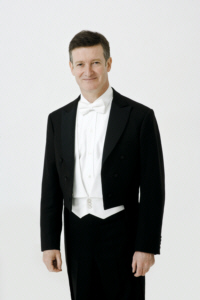Handel's 1711 masterwork Rinaldo was the composer's initial opera effort for London and became the most frequently performed of his stage works during his lifetime. The opera first came to Lyric Opera of Chicago in May 1984, in a one-off concert performance with Marilyn Horne, Carol Vaness and Samuel Ramey as Rinaldo, Armida and Argante, respectively. Rinaldo finally enjoyed its company stage premiere on February 29, in an edgy new production by director Francisco Negrin that went some distance in reimagining the piece for a modern audience, while providing a glorious evening of Baroque vocalism.
David Daniels, returning to the title role after a hiatus of several years — he sang Rinaldo in another Negrin staging at New York City Opera in 2000 — reconfirmed his unique place in the musical world today. Daniels's exquisitely achieved "Cara sposa" emerged as one of the most beautiful single vocal interludes of Lyric's season.
Daniels was surrounded by a cadre of prodigiously talented principal singers, all of whom were making Lyric debuts. Julia Kleiter made a beautiful thing of Almirena's thrice-familiar "Lascia ch'io pianga," particularly in the dynamic shading with which she graced the da capo. Sonia Prina was entirely convincing in the travesti role of Goffredo and displayed a first-class Baroque sensibility in Act III's "Sorge nel petto." The sheer amplitude of countertenor Iestyn Davies's Eustazio was breathtaking, and Italian bass-baritone Luca Pisaroni delivered Argante's "Sibilar gli angui"thrillingly. Most impressive of all was South African soprano Elza van den Heever, who tore through Armida's pyrotechnical writing with dazzling assurance and unfailingly reminded us that, reformed or not, this lady is trouble.
The visuals by set and costume designer Louis Désiré were largely inspired by contemporary fantasy film. A cycloramic sweep of Lucite panels, shimmering in the crimson wash of Bruno Poet's lighting, framed the playing space, within which stood a mobile stone construction of block letters proclaiming "Gerusalemme." This massive structure was variously employed as the great wall of that besieged city, the craggy terrain surrounding the mysterious Sage's domain or a grand chariot upon which Argante made his majestic entrance. Armida's sorcery was keenly depicted visually, as the glowing panels morphed into a keyboard pattern of alternating black and white and an enormous harpsichord case descended from above, which initially released a sea of cheerful balloons from beneath its lid — and then assumed a more ominous function by entangling Almirena in its strings. Negrin fielded a wealth of clever touches. Armida's "Vo' far guerra" was great fun: the sorceress grew increasingly taxed by the instrument's endless improvisational riffs and finally hurled a bottle at it as it exploded into a smoky conflagration. One intermittently wished that choreographer Ana Yepes's omnipresent dancers would hold still during an aria and allow for a focused vocal moment, butRinaldo'sdramaturgy is a trifle shaky, and the device did keep things moving.
Harry Bicket drew a brisk, buoyant performance from the orchestra. Handel's rambling score, much of it pilfered from earlier works, was pared down to just over three hours. Special kudos to continuo players Peter Swenson and Patrick Jee on theorbo and cello, and especially to Jory Vinikour, for his delightful harpsichord virtuosity.
 Back to List
Back to List